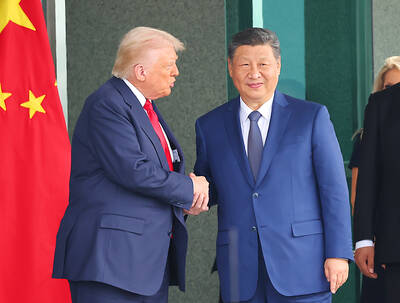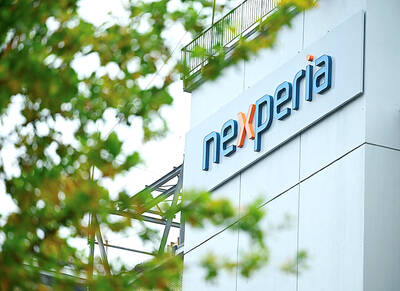Foreign direct investment (FDI) in Taiwan approved by the Investment Commission in the first four months of this year surged 48.68 percent annually to US$2.97 billion, driven by the wind power sector and the semiconductor industry.
The largest approved FDI in the period was NT$24.8 billion (US$827.77 million) by Denmark-based Orsted Wind Power TW Holding A/S for windfarm projects off the coast of Changhua County, commission data showed.
The second-largest FDI was by Diodes Taiwan SARL, which injected NT$13.3 billion into its local unit, Diodes Technologies Taiwan Co (台灣達爾科技), while Japan-based Kioxia Corp’s NT$8.23 billion investment in its local unit was the third-largest, the data showed.
By country, Denmark was home to the largest foreign investors in Taiwan with a total of US$1.09 billion, followed by Japan with US$547.6 million and Luxembourg with US$446.49 million, the data showed.
FDI from China, which the commission reviews separately, soared 61.65 percent year-on-year to US$41.83 million in the four-month period, the data showed.
The increase was mainly propelled by a NT$360 million investment by Hong Kong’s Jin Yao Development Co (津耀發展) in local medical device supplier MicroBase Technology Corp (微邦科技), as well as Swancor (Hong Kong) Holding Co’s (上緯香港) NT$224 million investment in Swancor Highpolymer Co (上緯興業), the data showed.
Meanwhile, approved outbound investment increased 24.29 percent year-on-year to US$2.89 billion in the period, the data showed.
Walsin Lihwa Corp’s (華新麗華) US$552 million investment in its Hong Kong-based subsidiary, Walsin International Investments Ltd (香港華新國際投資), was the largest outbound investment, followed by SinoPac Leasing Corp’s (永豐金租賃) US$100 million investment in its Hong Kong unit, the data showed.
Approved investment in China also surged 63.31 percent to US$2.38 billion, the data showed.

RUN IT BACK: A succesful first project working with hyperscalers to design chips encouraged MediaTek to start a second project, aiming to hit stride in 2028 MediaTek Inc (聯發科), the world’s biggest smartphone chip supplier, yesterday said it is engaging a second hyperscaler to help design artificial intelligence (AI) accelerators used in data centers following a similar project expected to generate revenue streams soon. The first AI accelerator project is to bring in US$1 billion revenue next year and several billion US dollars more in 2027, MediaTek chief executive officer Rick Tsai (蔡力行) told a virtual investor conference yesterday. The second AI accelerator project is expected to contribute to revenue beginning in 2028, Tsai said. MediaTek yesterday raised its revenue forecast for the global AI accelerator used

TEMPORARY TRUCE: China has made concessions to ease rare earth trade controls, among others, while Washington holds fire on a 100% tariff on all Chinese goods China is effectively suspending implementation of additional export controls on rare earth metals and terminating investigations targeting US companies in the semiconductor supply chain, the White House announced. The White House on Saturday issued a fact sheet outlining some details of the trade pact agreed to earlier in the week by US President Donald Trump and Chinese President Xi Jinping (習近平) that aimed to ease tensions between the world’s two largest economies. Under the deal, China is to issue general licenses valid for exports of rare earths, gallium, germanium, antimony and graphite “for the benefit of US end users and their suppliers

Dutch chipmaker Nexperia BV’s China unit yesterday said that it had established sufficient inventories of finished goods and works-in-progress, and that its supply chain remained secure and stable after its parent halted wafer supplies. The Dutch company suspended supplies of wafers to its Chinese assembly plant a week ago, calling it “a direct consequence of the local management’s recent failure to comply with the agreed contractual payment terms,” Reuters reported on Friday last week. Its China unit called Nexperia’s suspension “unilateral” and “extremely irresponsible,” adding that the Dutch parent’s claim about contractual payment was “misleading and highly deceptive,” according to a statement

Artificial intelligence (AI) giant Nvidia Corp’s most advanced chips would be reserved for US companies and kept out of China and other countries, US President Donald Trump said. During an interview that aired on Sunday on CBS’ 60 Minutes program and in comments to reporters aboard Air Force One, Trump said only US customers should have access to the top-end Blackwell chips offered by Nvidia, the world’s most valuable company by market capitalization. “The most advanced, we will not let anybody have them other than the United States,” he told CBS, echoing remarks made earlier to reporters as he returned to Washington